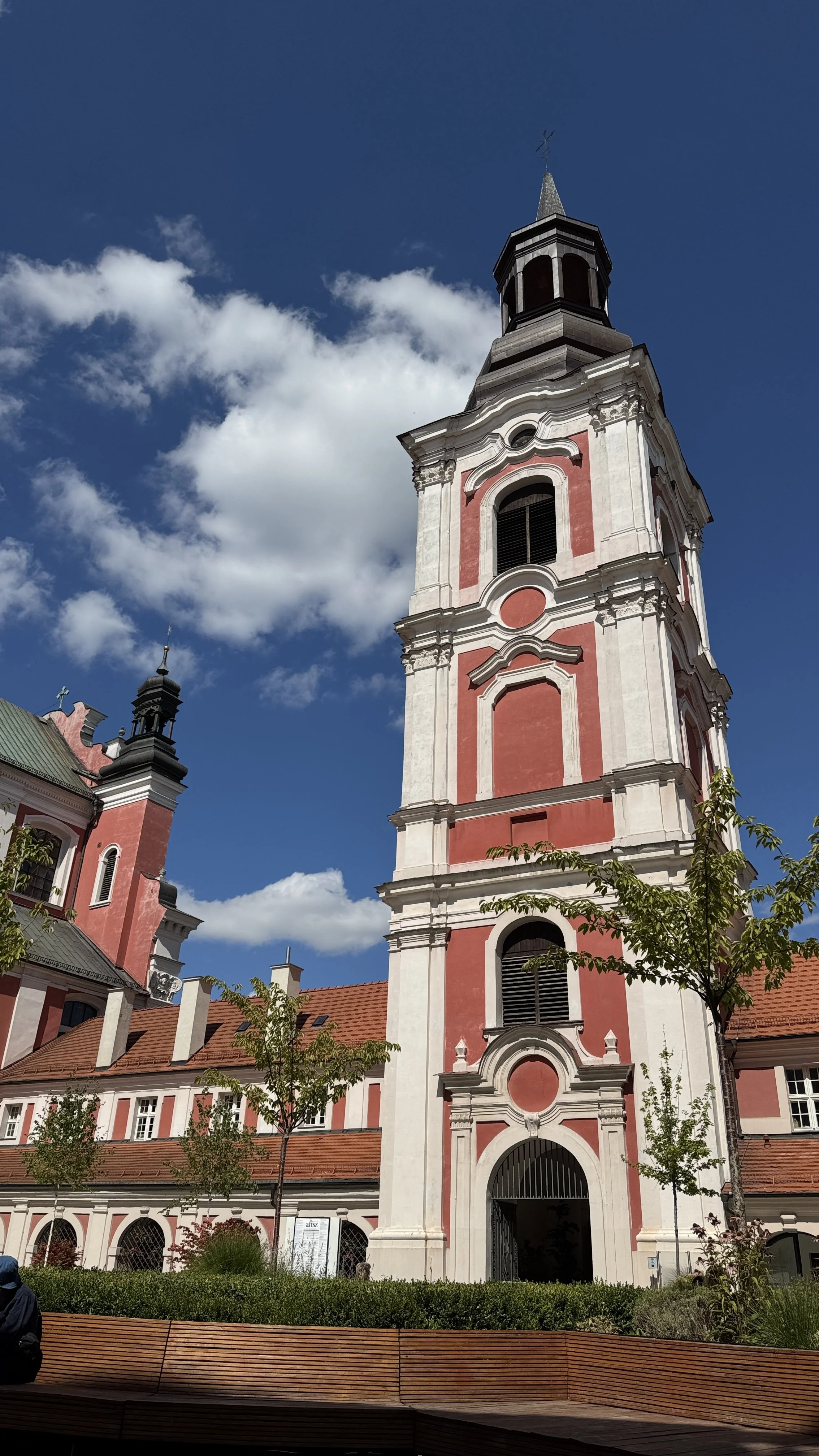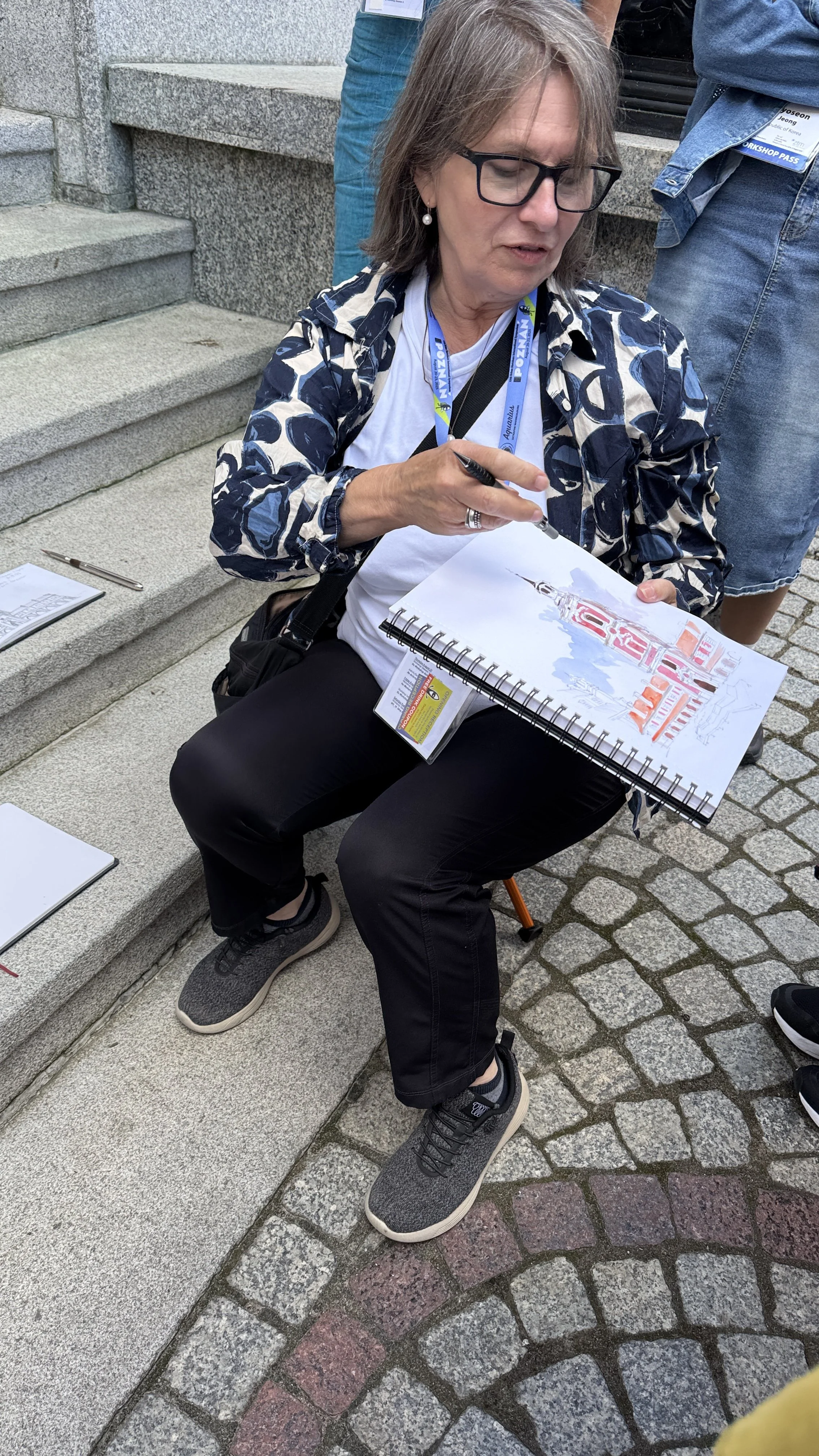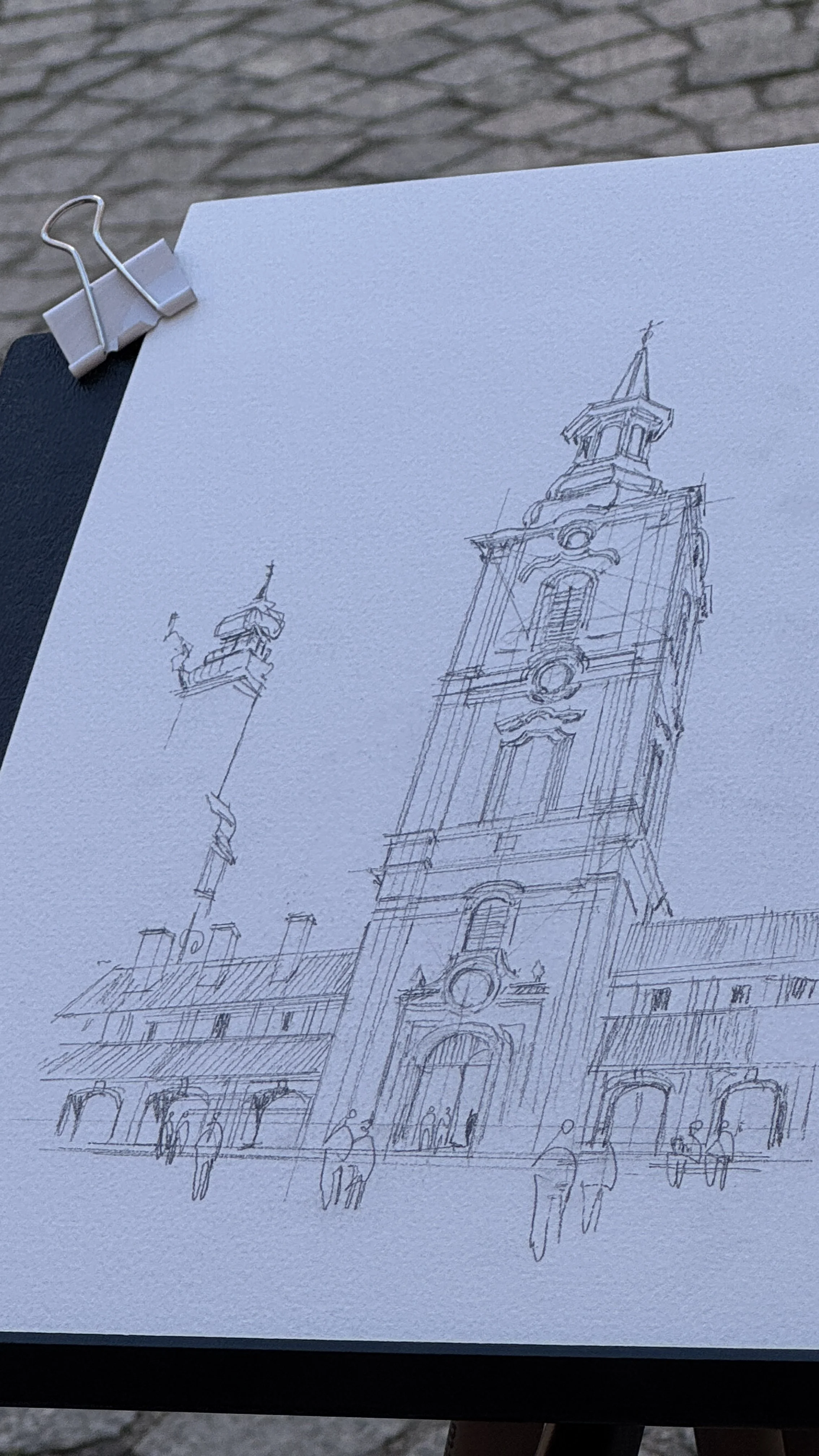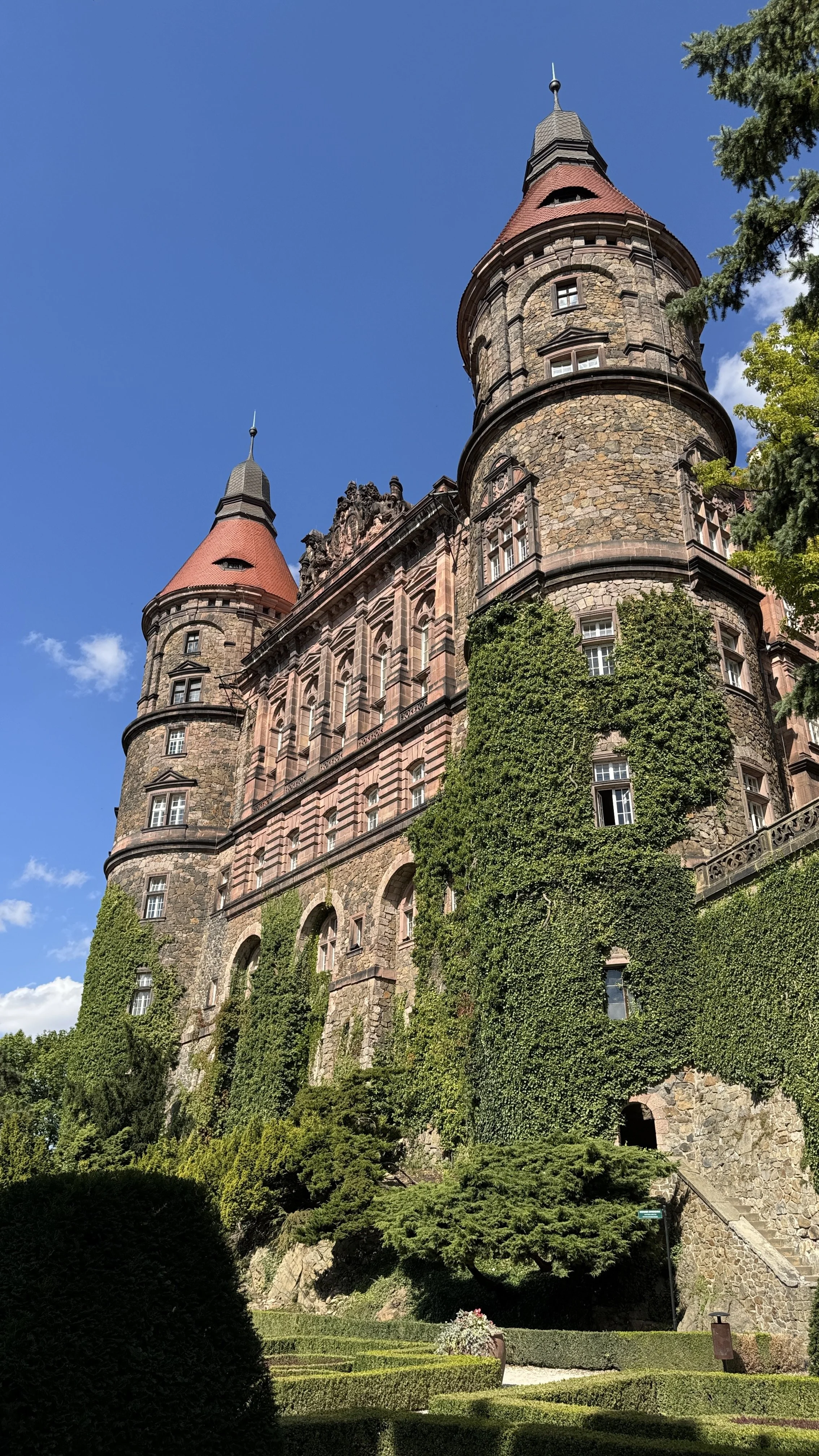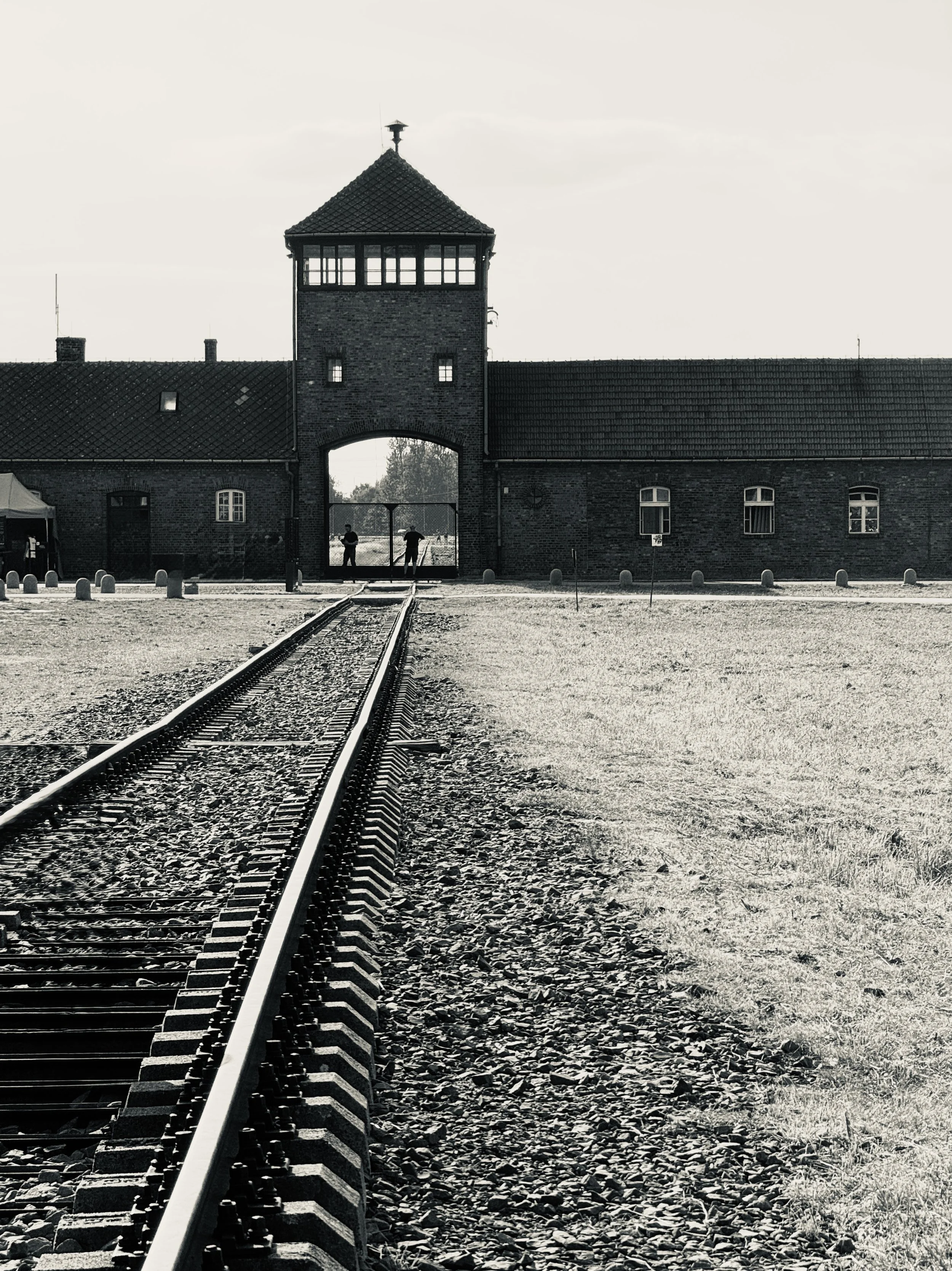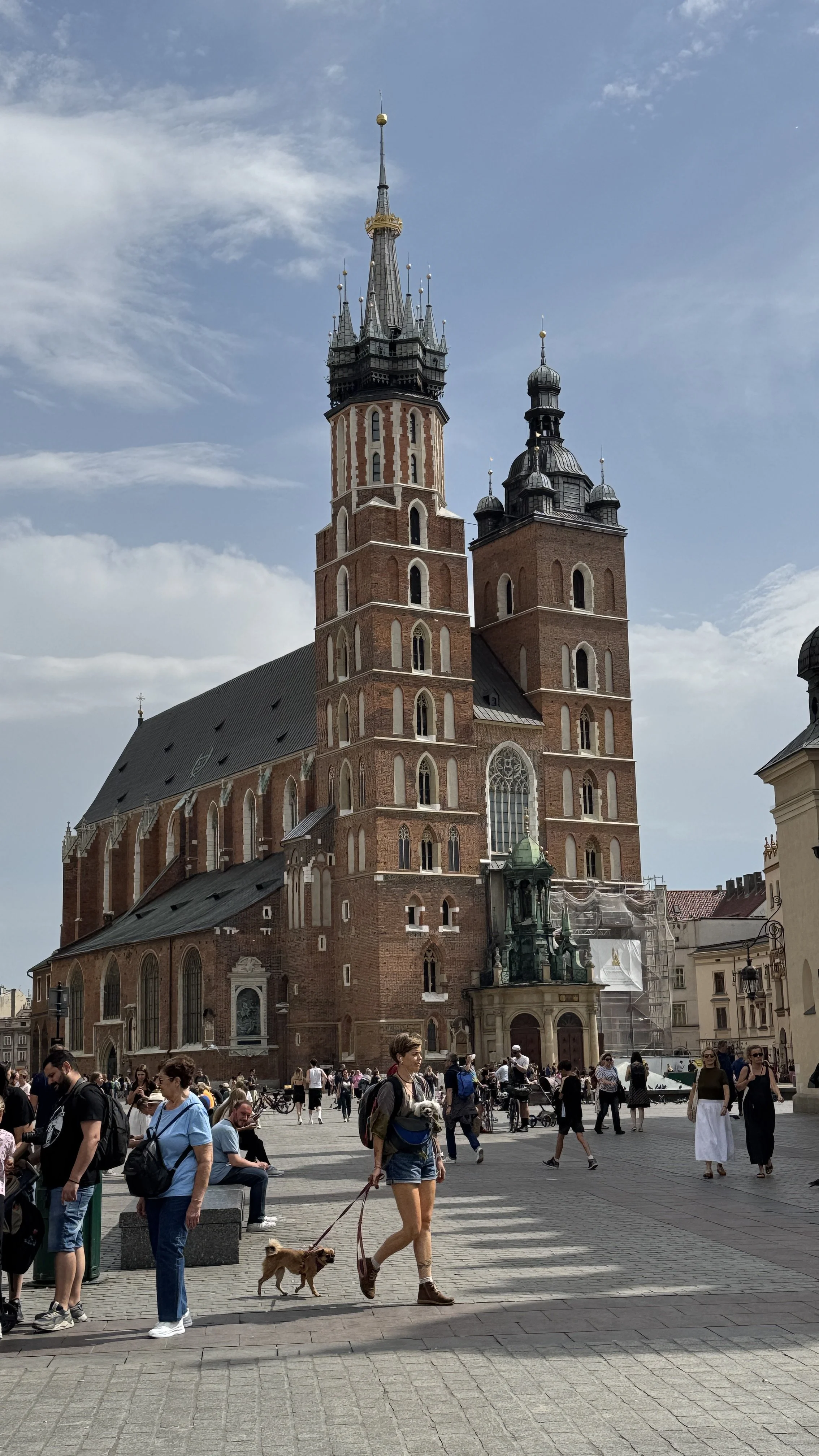Poland Cont’d
Part two
Upon arriving in Gdansk, we were immediately enamored with Poland and also enjoyed our week in Warsaw. As with any European capital, it has interesting museums and an old town historic district, but we just loved living like a local.
We enjoyed a rather hectic free time traveling by train through Poland until we reached Poznań. This year’s 13th Annual Urban Sketcher Symposium transformed the old town into a sketching haven for four days. Our train pulled in to Poznań Główny station almost a week before the Symposium started. As the day neared, our excitement level ramped.
But first, we had another occasion to observe. Last year, we celebrated our wedding anniversary on the shores of Lake Lugano in Italy. This time we visited a fine dining restaurant with an amazing tasting menu and the best sommelier (also one of the first) in country, Mr. Wawrzyniak. The wine tasting was superb.
Happy Anniversary!!!
Having not really found the inner peace to focus on creating full watercolor paintings during our travels, we thought sketching while on the road would be ideal; creating miniature vignettes as memories of places we visited, as well as keeping our drawing skills honed. So, while in Taiwan in January, we signed up for some symposium workshops in August, and then created a whole four-week trip through Poland around that.
We sketched the Apollo fountain in Old Town Square, Poznań
Fantastically, Randy decided to give sketching a shot and joined me, but for different workshops. In the following months, we hoped to sketch more often, but only succeeded a few times.
Poznań Town hall with the famous clock tower goat show at noon
Urban sketching is a global movement existing since about 20 years, having started in Seattle and now has over 500 chapters worldwide. People who like to draw meet locally about once a month and together sketch surrounding buildings, markets or basically anything catching the eye. All are welcome, none are judged. Everyone sketches for their own enjoyment, to hone maybe their drawing skills, but not for anything other than personal pleasure.
A pair of urban sketchers
The Symposium location changes every year. It was in Buenos Aires in 2024, and previously in Chicago, Porto, Auckland, Barcelona …. and people come from all over the world. About 600 attendees like us got tickets, but at least the same number of people arrived without participating in any official workshops, just for the fun of being around fellow international sketchers.
Olivia Marcus - People Everywhere! workshop group
Here is Randy’s report:
As we arrived early in Poznań, a beautiful city with a lot of interesting squares including a lovely old city center, when I wandered through the city, I started seeing groups of sketchers sitting on portable chairs drawing people, buildings, markets and monuments within view. First, there were a few, then a dozen, and by the time of the event, sketchers were everywhere.
Urban Sketching for those lay people not familiar with the term involves carrying a sketchbook, various pencils (lead or colored), and optionally a small palette of watercolors or other paint media.
As this was the 13th such gathering, you’d think that it would run smoothly, and mostly it did. There were a few hiccups, but once the ball got rolling, the wheels greased and the engine rumbling, we all spread throughout the city occupying squares and parks and street corners. There were maybe thirty instructors, all famous Urban Sketchers with their own internet following, and each group consisted of around 16 students.
Standing before the Freedom Fountain in Plac Wolności
We bumped into Shari Blaukopf and her husband from Montreal before the Symposium began and it was great to meet her. She was a workshop instructor for the Newton Watercolor Society while Gitty was president. We have taken online workshops with Suhita Shirodkar, and she was just as fun and quirky in person as over the web. Finally, Gitty sketched with Stephanie Bower, whose books about perspective and Urban Sketching are supurb.
One sketcher drew the Rogal Swiętomarciński (St. Martin’s croissant), a delicious Viennoiserie stuffed with a poppy-seed almond filling and covered with a sugar icing sprinkled with nuts. The sketch was inspiring, but the taste was a whole different level of delicious.
Delicious Rogale Swietomarcinskies …
… also called St. Martin’s Croissant originated in Poznań
As Gitty is much more advanced at both sketching and watercolor, we participated in different workshops. The four days were a whirlwind of activity and far more hectic than anything recently.
So many items to add to your sketching supplies!
We bought some last minute supplies and some stools to sit on. I learned how to draw a wonky building from the ground up like assembling shapes using building blocks. I learned how to sketch and paint with unconventional tools such as a fork, a toothbrush and a q-tip. Almost anything can be turned into a sketching utensil, and when moving out of your comfort zone using pencils and brushes, miracles can happen.
Andrew James demonstrating constructing from the ground up
Andrew James’ workshop is called Wonky Buildings … a very freeing sketching style
Throw down of people’s sketches
Randy’s wonky church sketch
Although we knew no one when we arrived, by the closing ceremony, we chatted with new sketcher friends who we hope to see again. The entire Symposium was transformative. We both look forward to practicing our new skills as we continue traveling.
Although over six hundred people descended upon Poznań to participate in workshops, several really weird coincidences confounded us. A woman sitting next to Gitty during opening ceremony lived in the same town where Gitty studied at university. At the final day family photo in Liberty Square, we stood among the six hundred sketchers again right next to her. Really? Wow!
Urban Sketchers at Freedom Square on the final day of the symposium
And during the silent auction, someone entered a bidding war with me over a sketch we wanted that was done by one of my instructors. I wondered where this mysterious person was only to discover that she sat literally behind me and was frustrated by some annoying guy who kept outbidding her. Again, really?
Silent Auction sketch by Paul Wang that we won
Randy and Urban Sketcher instructor Paul Wang
The day after the Symposium, we slept late with that sense of emptiness one gets after so much commotion. It was Sunday and all the stores were closed, so we used our free day in reflection. The 14th Urban Sketcher Symposium will be held next July in Toulouse, and if we can snag some of the 600 workshop tickets, we’re definitely going.
Driving South
Harvest time!
As planned, we picked up a rental after the symposium and traveled through the beautiful, pastoral landscape of southern Poland. Our first stop was the city of Wroclaw with its huge market square called Rynek similar to the one in Poznań, but much bigger, really impressive.
Wroclaw Town Hall in the old town center
St. Mary Magdalene Church towers are connected by a bridge
Historic Market Square
As this city was also heavily destroyed during WW2, the result of the reconstruction is a mix of old-world beauty with many restored public buildings and churches as they might have looked when they were originally built. This city felt quieter, less visited by tourists, and overall, really stunning. And playful, too, as it has nearly 800 miniature dwarfs stashed throughout the city for people to find like a scavenger hunt.
A tasting flight of home-made schnapps at Gastropub Wrocklawska distilled from horseradish, beetroot, onion, and gooseberry
The country is peppered with castles and ruins, either within the cities and towns, or in the countryside, as it was with 800 year old Castle Ksiaz, the largest castle in the Polish province of Silesia (in German: Schlesien).
Close to Krakow, we toured the concentration camp Auschwitz and the extermination camp Birkenau in which more than one million men, women and children lost their lives in the most horrible ways, mainly through slow starvation and in the gas chambers by the Nazi Germans during the years 1941-45.
Barbed wire fence surrounding Auschwitz
We were somberly walking along endless rows of barrack ruins, now only foundations with chimneys, as we listened to our guide talking gravely about the historic events, so that this enormous area was dotted with many very quiet groups listening with headphones to the horrors from when the camp was occupied. I don’t think we will ever forget those impressions.
The city of Krakow, which was for many centuries its royal capital before moving to Warsaw, was our final stop before leaving Poland. While driving through the country, we listened to James Michener’s Poland and it is fascinating to hear many of the details throughout history and discover their reverberations in present day. For example, the river Vistula that flows from the Tatra Mountains in the very south through Krakow, through Warsaw and opens at Gdansk into the Baltic Sea was important to so many events throughout the centuries, from the Tatars, Mongols, and Prussians to the Nazi Germans and Soviets.
Wieliczka Salt Mine near Krakow is a UNESCO World Heritage site with over 186 miles (300 km) of tunnels burrowing deep into the earth
The huge Chapel of St. Kinga chamber, carved from rock salt 330 feet (101 meters) below the surface, with pure salt-crystal chandeliers, is a true wonder to behold
Krakow is a really big city with an historic center that is a UNESCO World Heritage Site which includes an old town market square and the massive Wawel Castle, as well as the city district Kasimierz with its old Jewish Ghetto.
As Kasimierz, with its own rich history, was nearly completely destroyed by the Nazi Germans, only a few houses and walls remain, along with only three synagogues.
The chairs in Jewish Heroes Square represent the inhumanity against the Jews from the Warsaw Ghetto with each chair symbolizing 10,000 lost souls
But today this area is full of small restaurants, thriving with a vibrant night life for young folks who enjoy summer evenings on the streets and market squares.
We are leaving Poland after four weeks – what a comfortably long time. We mostly explored cities, which is a pity, as Poland has many National Parks and other natural areas that I researched, but did not succeed to reach without a car. We were both so impressed and surprised with the gentle friendliness of the Poles who are a proud people: careful, but smiling, not intruding, but always willing to help.
Dziekuje, Poland! (Thank you!) [Tschin-koo-ye!]




